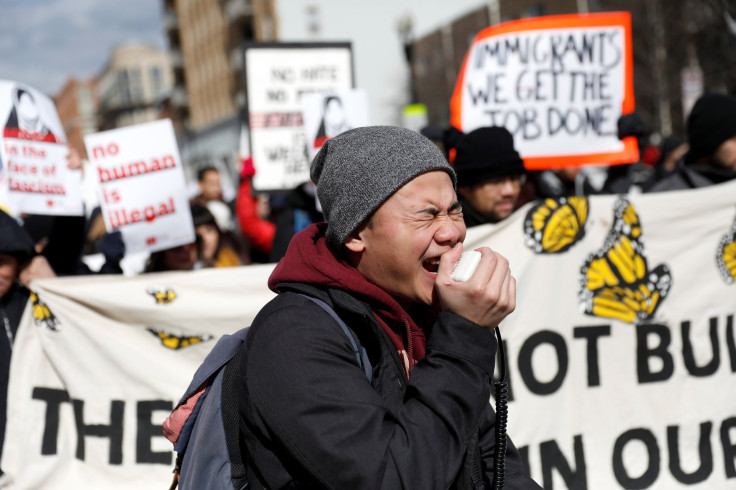Do Strikes Really Work? After Women’s March, Food Workers To Boycott Trump In May

President Donald Trump's slogan for his campaign and his presidency has been “Make America Great Again,” a phrase harkening back to some bygone era of U.S. history, but exactly which era Trump meant was unclear.
Since Trump was also running on the promise of job growth and a better economy, however, it was probably safe to assume he wasn’t yearning for a time when unions organized strikes in the early 20th century. But since Trump’s inauguration, workers have participated in two nationwide strikes — the Day Without Immigrants and the Women’s Strike. Yemeni bodega workers in New York City went on strike for a day in February to protest Trump’s travel ban.
Read: Equal Pay For Equal Work: Women In Red Protest Trump In NYC
Now food industry unions and service workers were organizing another strike on May 1. In fact, almost 350,000 workers are planning to strike, reported BuzzFeed News last week, on a day that has historically coincided with labor activism.
“We understand that there’s risk involved in (striking), but we’re willing to take that risk in order to be able to move forward in this moment, while the most marginalized are in the crosshairs of this administration,” said David Huerta, president of western chapter of the Service Employees International Union.
Read: Will Trump Kill Unions? President Pressured To Cut Back Organized Labor-Friendly Decisions From Obama Era
With the resurgence of a classic union tactic, the question now: Do strikes actually work?
There’s no blanket answer to that question. It depends on which strike, the goals of the strikers and outside factors too, like the political sentiment elsewhere.
In 1919, steel workers represented by the American Federation of Labor declared a strike against the United States Steel Corporation, and eventually the strikers numbered an estimated 350,000. Workers protested their pitiful wages and long working hours, and they demanded a fix to these problems as well as union recognition. But company leaders depicted the strikers as Communists — considered dangerous radicals during this time — and the strike failed.
There have been several successful strikes in the U.S., though. For instance, in 1970, postal workers went on strike to challenge low wages, long hours and unsatisfactory benefits. About 210,000 postal workers went on strike, which began in New York and spread with gusto across the country. Before two weeks were up, the strike ended with a pay raise for the postal workers.
But when it comes to pressuring Trump to rescind his immigration policy decisions, that’s a tall order. However, strikes might have backdoor ways to influence the White House or Washington, D.C., in general. For example, strikes and grassroots activism may instead pressure legislators to reject Trump’s political stances. And finally, organizers of recent strikes have hoped to change other people’s perceptions of immigration and labor issues, which would be no small feat.
© Copyright IBTimes 2024. All rights reserved.






















